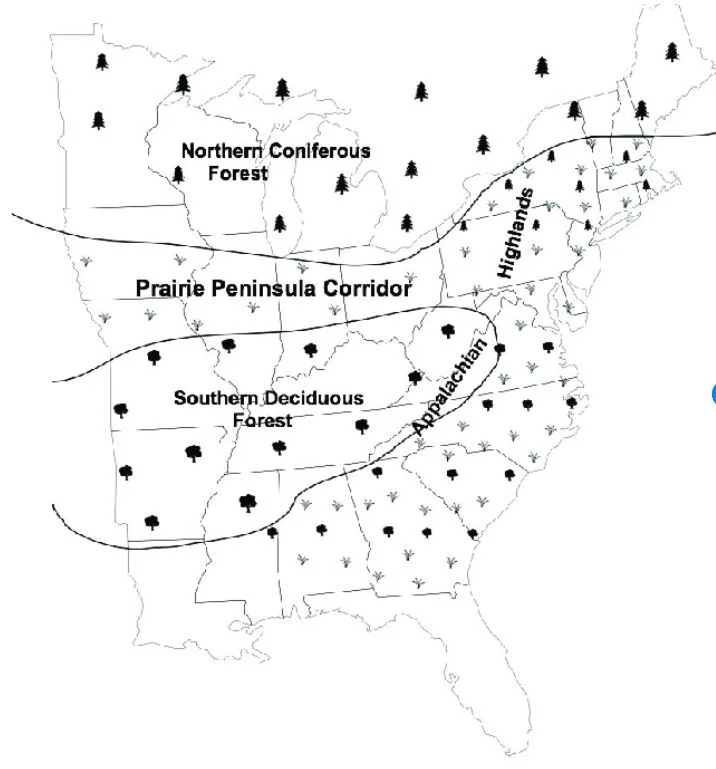North American prairies are some of the most endangered habitat types on the planet. Once covering vast swaths of the continent representing the arid rain shadow of the Rocky Mountains, the prairies now occupy only 1% of their former range. We have converted most of that land into agriculture and sub-developments. It may surprise many of you to learn that following the retreat of the Pleistocene glaciers, a subset of prairie ecosystem once stretched a lot further east than one would expect for a prairie. This grassland ecosystem ranged far up into the northeast and even met the Atlantic Coast in parts of New Jersey and Long Island. This was known as the prairie peninsula and today its remnants represent some of the rarest prairie ecosystems that North America has left.
Ecologists believe that the prairie peninsula owed its existence to an intriguing quirk of the climate at that time. During interglacial periods, eastern North America’s climate was much warmer and drier than it is today. Because of this, prairie grasslands were hypothesized to have migrated east, following the recently exposed terminal moraines that the glaciers left in their wake. Moraine soils tend to be composed of unconsolidated till and are quick to drain water, which provided perfect conditions for prairies to develop. This prairie peninsula preceded the invasion of trees, which now make up the forests that dominate eastern North America. Today we refer to the remnants of this prairie peninsula as "heaths" or "barrens." Despite their rarity, ecologists have long debated whether such habitats are truly echoes of our glacial past or products of a more recent, cultural clearing of the land.
A relatively recent paper sheds some light on this debate using some pretty clever detective work. The author used a variety of insects, but mainly focused on spittlebugs, to show that these eastern prairies remnants are, indeed, relics of our glacial past. Apparently, insects like leafhoppers, froghoppers, and spittlebugs are often extremely specialized on specific species of plants, mainly grasses. They feed much like aphids do, by sucking the juices out of the plants vascular tissues. Many of these insects are flightless or at least do not travel great distances from where they were born. If one were to find certain species on the eastern prairies, it would provide strong evidence in support of prairie migration from west to east via the glacial moraines.
The evidence suggests exactly that. Eastern pockets of remnant heaths and barrens do in fact host many of these prairie specialists. What is more interesting is that this research has shown that we can track, with some certainty, the migrational patterns of these ecosystems. As expected, the prairies moved in from the west, during an interglacial period much warmer than now. As they moved across the eastern US, they ran into the Appalachian Mountains, which is a formidable barrier to say the least.
How did the prairies circumvent this obstacle and end up in pockets along the Atlantic coast? Evidence points to sandy sediments in the numerous valleys along the spine of the Appalachians. Most of these sediments no longer exist due to erosion and out-crowding by forests, causing the current disjunction we see in these rare eastern prairie grasslands. It is amazing to me to think that these pockets of habitat have existed for centuries, despite all the changes we have laid upon the land. These results are a wonderful example of the uniqueness of these habitats and, now more than ever, show us how much these deserve our attention so that maybe they can persist into the future. It also highlights just how special these ecosystems truly are. They are not something created by the hand of man. Instead, these habitats have survived the test of time. Now they must survive us. Support your local land conservancy today!
Map Credit: [1]
Further Reading: [1]


